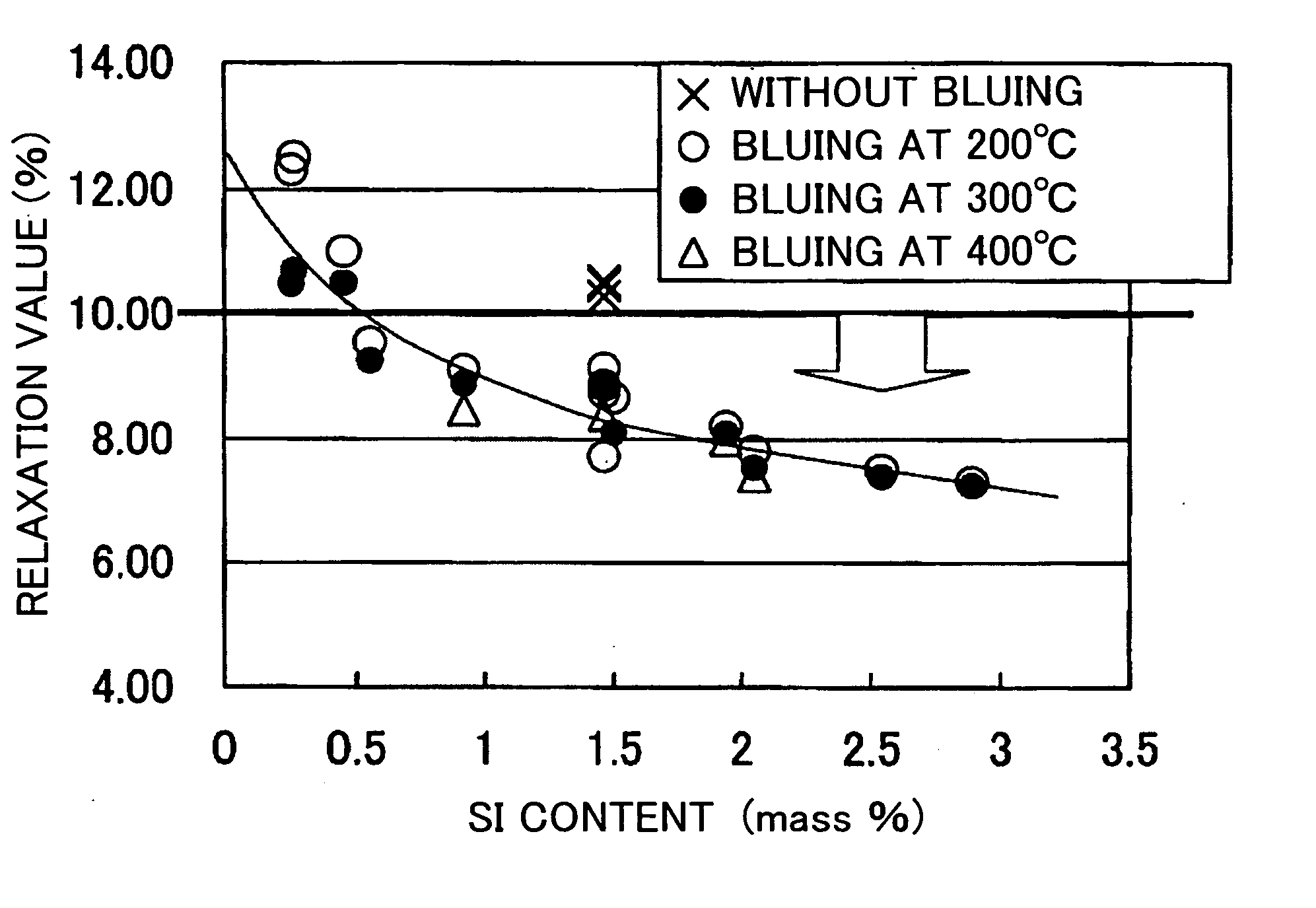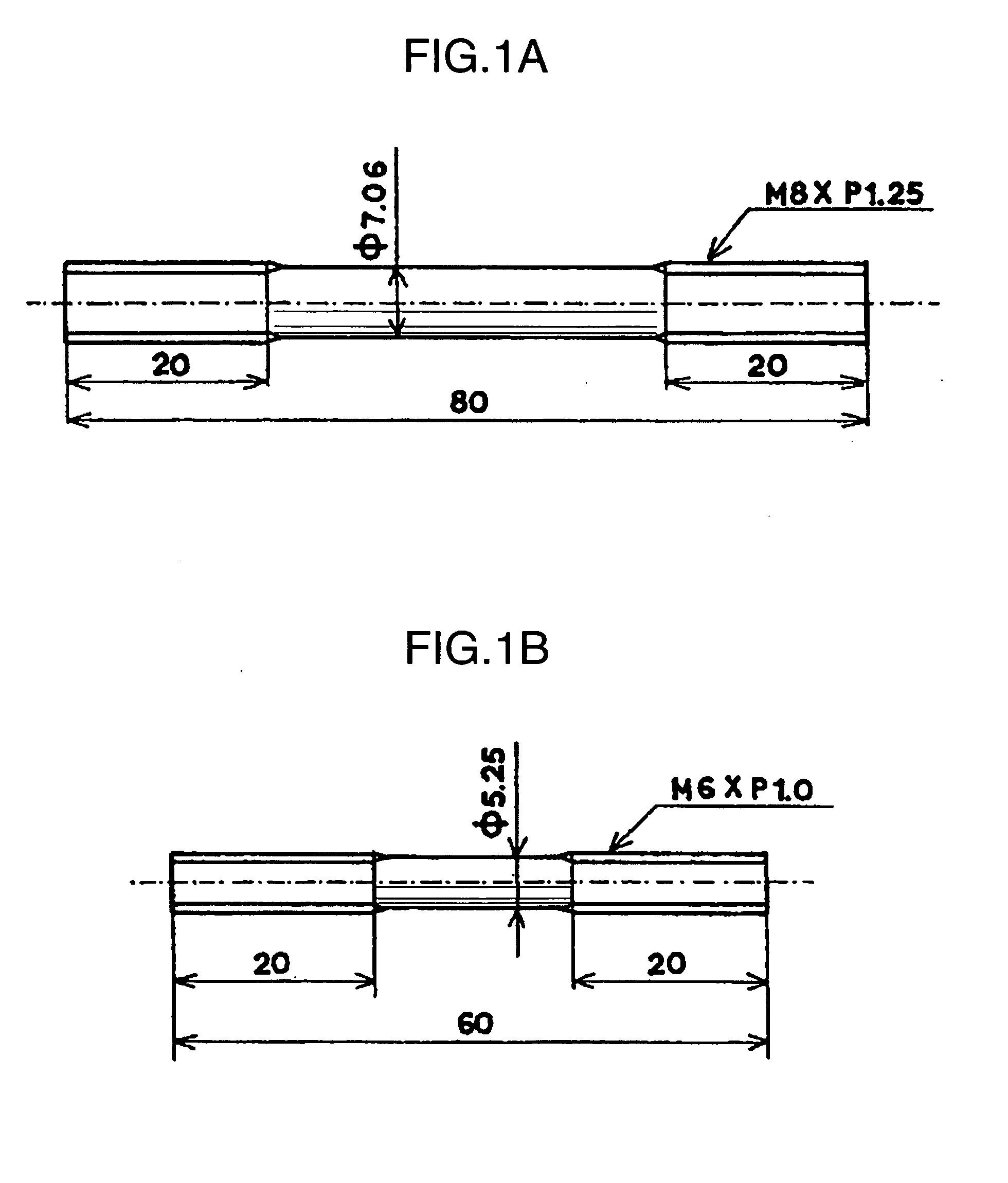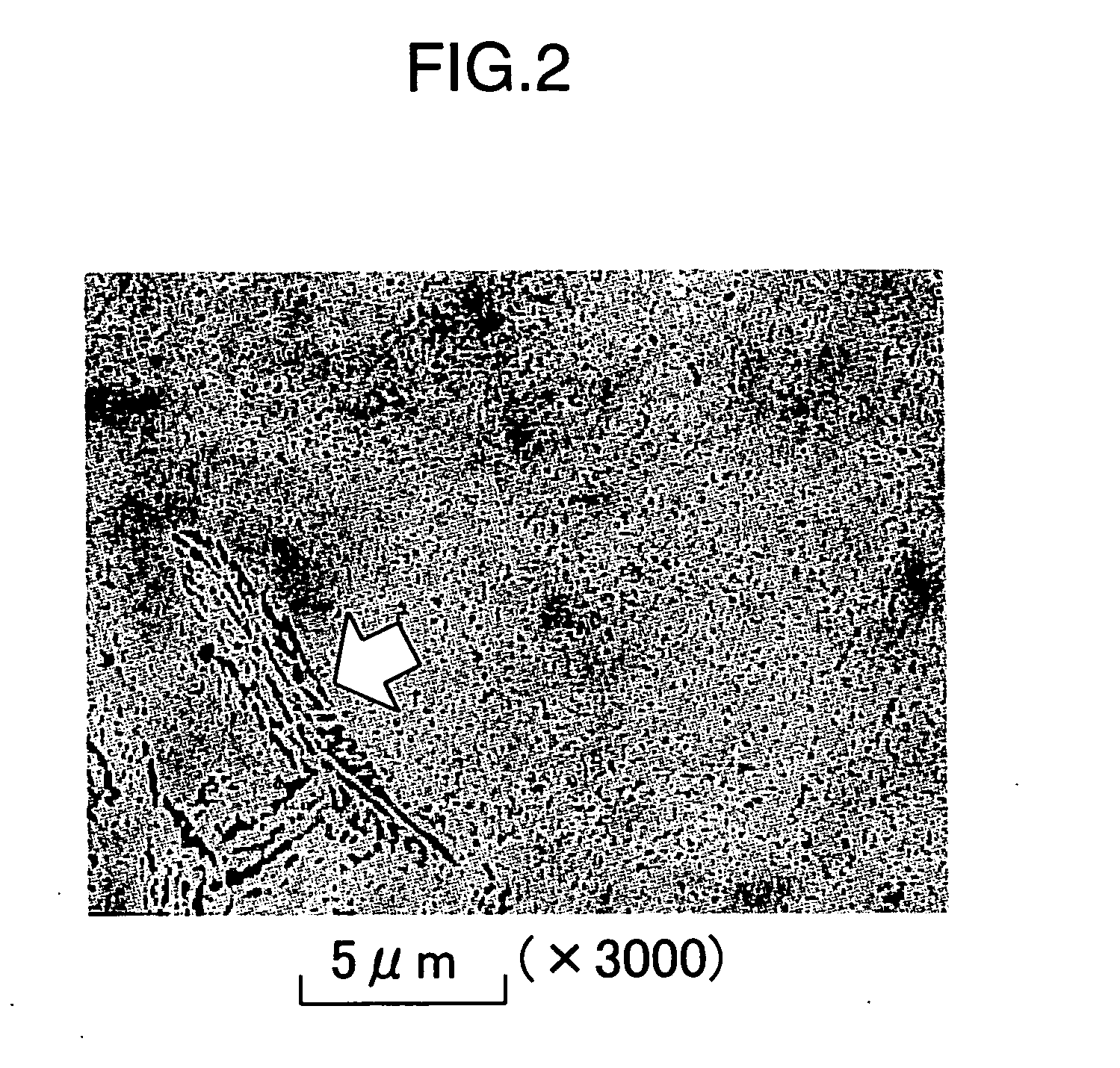High-strength bolt superior in delayed fracture and resistance and relaxation resistance
a high-strength bolt, delayed fracture technology, applied in the direction of screws, heat treatment equipment, furniture, etc., can solve the problems of reducing the use range, difficult to specify the reasons indiscriminately, and common high-strength bolts used in automobiles and various industrial machines have a risk of delayed fracture, etc., to achieve the effect of reducing the content of proeutectoid cementite, preventing precipitation of proeutecto
- Summary
- Abstract
- Description
- Claims
- Application Information
AI Technical Summary
Benefits of technology
Problems solved by technology
Method used
Image
Examples
example 1
[0040] Test steels (A to M) respectively having the chemical compositions shown in the following Table 1 were hot-rolled into wires having the wire diameters (8.0 to 11.5 mmφ) shown in the following Table 2, and the wires were patented in the conditions shown in the following Table 2 (heating temperature: 940° C., constant temperature transformation: at 510 to 620° C. for 4 minutes). The test steel M was converted completely into the martensite structure by quenching and tempering for comparison. The structure, degree of decarburization, and tensile strength of the steel wires obtained were determined. In studying the structure, the proeutectoid ferrite, proeutectoid cementite, bainite and martensite or pearlite structure was separated by the following method; and the areal rate of each structure was determined.
[0041] [Separation of Each Structure]
[0042] The cross sectional face of a steel wire was embedded, polished and corroded as it is immersed in alcoholic 5% picrate solution f...
PUM
| Property | Measurement | Unit |
|---|---|---|
| tensile strength | aaaaa | aaaaa |
| temperature | aaaaa | aaaaa |
| tensile strength | aaaaa | aaaaa |
Abstract
Description
Claims
Application Information
 Login to View More
Login to View More - R&D
- Intellectual Property
- Life Sciences
- Materials
- Tech Scout
- Unparalleled Data Quality
- Higher Quality Content
- 60% Fewer Hallucinations
Browse by: Latest US Patents, China's latest patents, Technical Efficacy Thesaurus, Application Domain, Technology Topic, Popular Technical Reports.
© 2025 PatSnap. All rights reserved.Legal|Privacy policy|Modern Slavery Act Transparency Statement|Sitemap|About US| Contact US: help@patsnap.com



